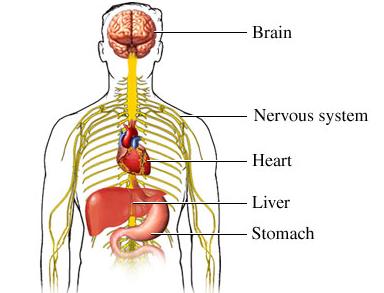Type 1 and type 2 alcoholism
Alcoholism is a chronic, often progressive disease in which a person craves alcohol and drinks despite repeated alcohol related problems (like losing a job or a relationship). Alcoholism involves a physical dependence on alcohol, but other factors include genetic, psychological, and cultural influences.
Becoming addicted to alcohol is a gradual process that happens as alcohol changes the level of chemicals in your brain, especially gamma-aminobutyric acid or GABA (which stops you from being impulsive) and dopamine (which is linked with pleasurable feelings). As the levels of these chemicals change, you crave alcohol to make yourself feel good again.
About 18 million people in the United States abuse alcohol, and estimates suggest that more than 70 million Americans have dealt with alcoholism in their family. Alcohol is involved in almost half or all traffic deaths in the U.S.
Alcoholism is characterized by craving alcohol and losing control over drinking, along with a physical dependence (meaning that the person experiences withdrawal symptoms when not drinking) and a tolerance for alcohol (meaning the person needs to drink greater amounts to feel “good”). Before entering recovery, most alcoholics will deny they have a problem. People who abuse alcohol but are not dependent on it may have similar symptoms, but they don’ t feel the same craving to drink and usually don’ t experience withdrawal symptoms.
 Type 1 alcoholism accounts for about 75% of alcoholics and is characterized by the following signs and symptoms:
Type 1 alcoholism accounts for about 75% of alcoholics and is characterized by the following signs and symptoms:
- Onset of alcohol-related problems after the age of 25.
- A low degree of spontaneous alcohol-seeking behavior and alcohol-related fighting.
- Psychological dependence, coupled with guilt and fear about alcoholism.
- A low degree of novelty-seeking and a high degree of harm avoidance.
Type 2 alcoholism is characterized by the following signs and symptoms:
- Onset of alcohol-related problems before the age of 25
- High degree of spontaneous alcohol-seeking behavior and fighting
- Infrequent feelings of guilt and fear about alcohol dependence
- A low degree of harm avoidance and a high degree of thrill seeking
Type 1 alcoholics do much better in treatment and, because of longstanding antisocial behaviors and attitudes, Type 2 alcoholics usually need long-term structure to maintain sobriety (Woodward, 1998). Alcohol and all drugs trigger the mesolimbic dopamine reward system and the endogenous opioid system, which reward drinking. This is what addicts the brain and makes it impossible to stop drinking. If alcoholics stop drinking on their own, at the very least they are going to feel restless, irritable, and discontent. Only alcohol will move the patient back toward a feeling of peace.
###
Robert R. Perkinson, PHD
Helping Your Clients Find the Road to Recovery
Alcoholism - Treatment. I. Title.
RC565.P375 - 2004
616.86’10651- dc22